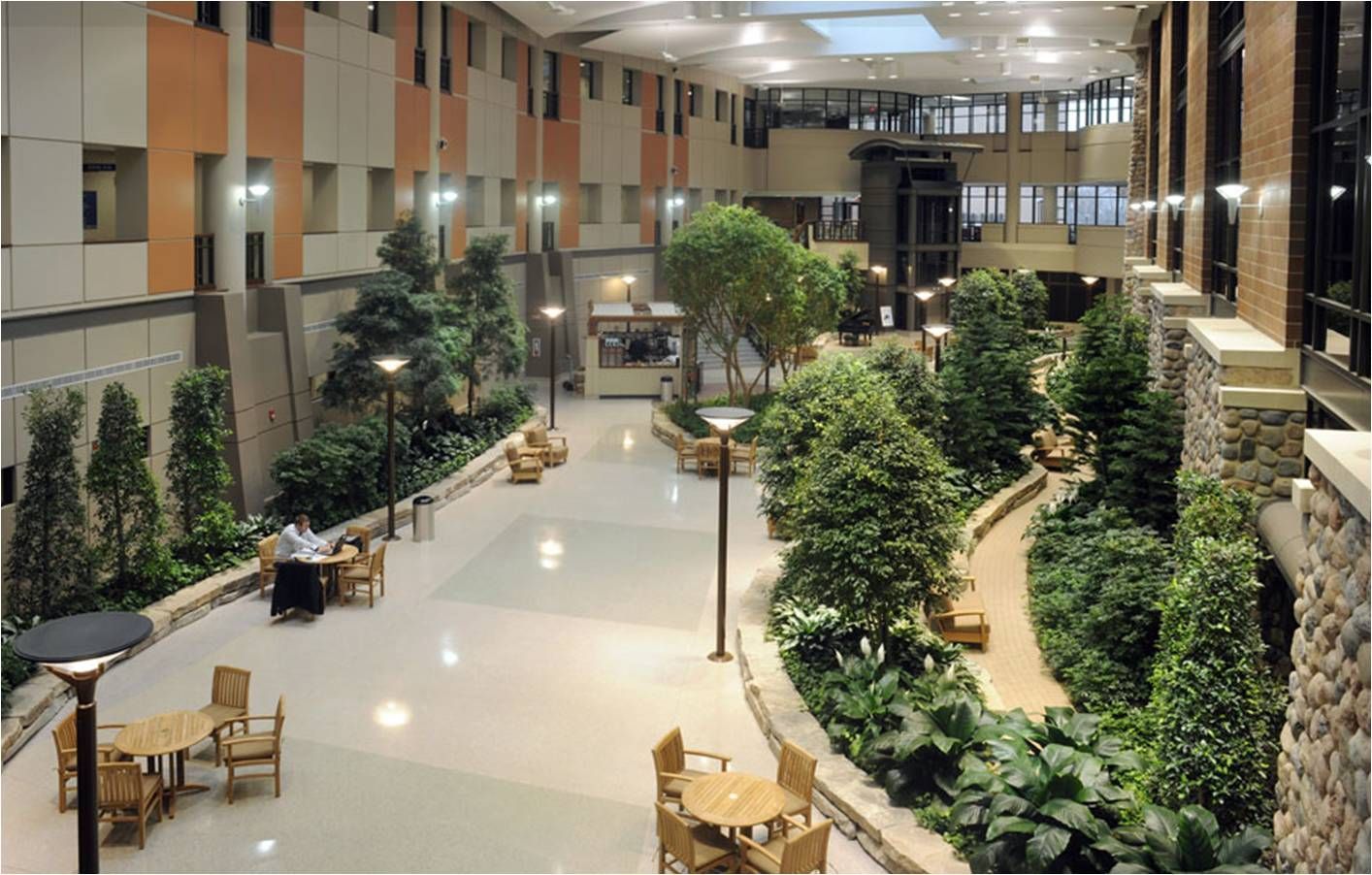Biophilic Design in Healthcare Facilities. What comes to mind when you think about incorporating nature in your healthcare facility design? Is it a simple houseplant on the counter or a picture of the sunset on the wall in the waiting room? When it comes to improving patient outcomes and enhancing staff wellbeing, that’s not enough. Enter biophilic design and construction; decision-makers are increasingly choosing building materials, lighting systems, and HVAC products that support this initiative.
Although the concept is nothing new — the idea of bringing the outdoors in — the impact is being studied more closely. Results show that adopting biophilic design could help facilities save $93 million annually in healthcare costs and expedite healing, as well as having a positive effect on the mental and psychological health of workers in the healthcare industry. (New research shows that 44% of clinicians report professional burnout.)
The intersection of nature and patient outcomes
The foundation of biophilic design is how nature is added to a building’s environment. While those plants are a great start, other factors environmental connections that provide sensory input for patients — consider water features. Access to outdoor-inspired spaces like gardens or sunrooms gives staff members the motivation to perform better.
Beyond those considerations are other design elements that can be incorporated in the design of healthcare facilities. Choose natural construction materials, color palettes that speak to nature, and encourage visitors to the facility to see and touch all of these elements to help reduce stress and promote overall wellbeing.
Windows also play a large role in biophilic design. Access to natural light and nature itself can offer a list of benefits: Reduced turnover, increased recovery rates, fewer medical complications for patients, and more contentment for caregivers. These byproducts of biophilic design were first discovered in 1984 by Dr. Roger Ulrich and continue to help healthcare facilities improve overall performance.
Helping promote health
It’s no secret that “green” products are necessary to help keep building occupants healthy. Low- or no-VOC building materials and other upgrades that promote energy efficiency are crucial to support health, but biophilic design in healthcare facilities goes above and beyond those standards.
From planning to construction to interior design, healthcare facility construction projects should incorporate biophilic design at every step of the process. This doesn’t need to cost much more, and in fact, it can save facilities money in the long run as it builds on existing elements without creating something new.
Stick to the (circadian) rhythm
A large chunk of the concept of biophilic design takes circadian rhythm into account. Humans need an internal clock “reset” every 24 hours, and that’s hard to do with constant exposure to bright fluorescent lights and without access to natural light during the day. This can be accomplished by adding large windows during the design process; a cost-efficient addition to the construction of healthcare facilities.
Natural light and views of the great outdoors help patients sleep better, face lower depression rates, and heal faster. Doctors and nurses can stay alert and more focused for longer periods, which in turn helps to reduce burnout and increase cognitive decision-making (which is vital for patient outcome success). Lighting systems have now become sophisticated enough to be customized for both patient and staff wellbeing with the right combination of cool and warm light distributed in the right areas of the facilities and at the right time of day.
Improving facility management costs
As previously mentioned, biophilic design doesn’t have to blow out the budget. Unlike green design elements (think: solar panels, costly LED upgrades ) biophilia can be incorporated without much-added cost, either during the design process or as part of facility management after the facility is built. Biophilic design elements don’t require any specialized training for facility managers, nor do they incur excessive maintenance costs over the lifetime of the building.
Improved patient outcomes and lower staff turnover due to burnout are also considered as cost-saving benefits of biophilic design. Overall performance improvement can’t be overlooked when it comes to the return on investment for the inclusion of biophilic design for healthcare facilities.
When it comes to building a healthcare facility that incorporates biophilic design, it’s important to work with a commercial construction team that understands the elements and trends that help drastically improve the health and wellbeing of both patients and staff. Get in touch, let’s talk about your next healthcare construction project and how our team can help.
The post Biophilic Design in Healthcare Facilities appeared first on G. S. & S. Construction.





